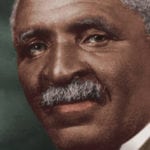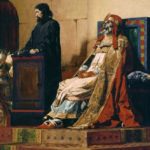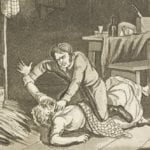 Animals
Animals  Animals
Animals  Weird Stuff
Weird Stuff 10 Weird Things People Used to Do at New Year’s
 Our World
Our World 10 Archaeological Discoveries of 2025 That Refined History
 Weird Stuff
Weird Stuff 10 Fascinating Facts You Might Not Know About Snow
 Miscellaneous
Miscellaneous Top 10 Things Crypto Was Supposed to Change & What Actually Did
 History
History 10 Huge Historical Events That Happened on Christmas Eve
 Music
Music 10 Surprising Origin Stories of Your Favorite Holiday Songs
 History
History 10 Less Than Jolly Events That Occurred on December 25
 Weird Stuff
Weird Stuff 10 Funny Ways That Researchers Overthink Christmas
 Politics
Politics 10 Political Scandals That Sent Crowds Into the Streets
 Animals
Animals 10 Species That Refused to Go Extinct
 Weird Stuff
Weird Stuff 10 Weird Things People Used to Do at New Year’s
 Our World
Our World 10 Archaeological Discoveries of 2025 That Refined History
Who's Behind Listverse?

Jamie Frater
Head Editor
Jamie founded Listverse due to an insatiable desire to share fascinating, obscure, and bizarre facts. He has been a guest speaker on numerous national radio and television stations and is a five time published author.
More About Us Weird Stuff
Weird Stuff 10 Fascinating Facts You Might Not Know About Snow
 Miscellaneous
Miscellaneous Top 10 Things Crypto Was Supposed to Change & What Actually Did
 History
History 10 Huge Historical Events That Happened on Christmas Eve
 Music
Music 10 Surprising Origin Stories of Your Favorite Holiday Songs
 History
History 10 Less Than Jolly Events That Occurred on December 25
 Weird Stuff
Weird Stuff 10 Funny Ways That Researchers Overthink Christmas
 Politics
Politics 10 Political Scandals That Sent Crowds Into the Streets
10 Dubious Legends Everyone Believes About Historical Figures
It’s easy for us to remember the famous deeds of historical figures, from the horde of warriors led by Genghis Khan that swept away empires to the calming words and leadership of Abraham Lincoln. But some of the legends that have surrounded these figures for decades or even centuries are little more than myths. The most outrageous have been debunked, but some remain hotly debated to this day.
10Jose Rizal Was Jack The Ripper (Or Hitler’s Father)
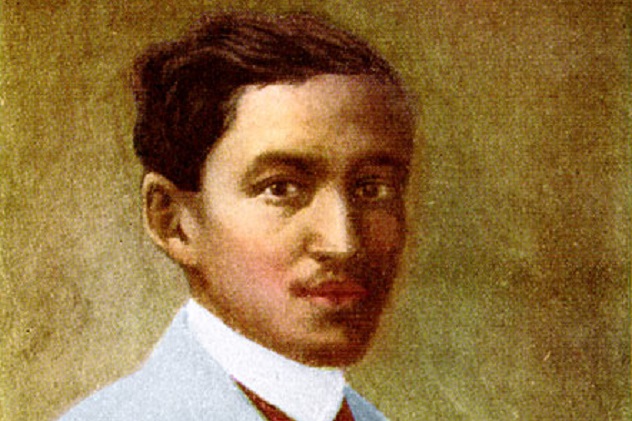
Jose Rizal is the national hero of the Philippines, an eloquent and well-educated man who campaigned for the freedom of the Filipino people. Persistent tales surround the man’s life, especially his stay in Europe. Most notable are claims that while Rizal was in London, he might have been doing some serial killing on the side.
The notorious Jack the Ripper was on the prowl during Rizal’s stay in the city from 1888–1889. During that time, no one really knew where Rizal went at night, and the Ripper’s method of murder led people to believe that he might have had a background in medicine, as Rizal did. The similarity in their initials (“J.R.”) was also noted.
Another tale regards Rizal’s alleged dalliances with beautiful European women. One woman, Klara Polzl, was a chambermaid in a small town in Austria when the two had a chance encounter. But this short-lived romance might have led to something historic, as Klara was none other than the mother of Adolf Hitler. Naturally, whispers abounded that Rizal had fathered the Fuhrer, but historians and genealogists were quick to debunk the rumor.
9Nicolaus Copernicus Invented Bread And Butter

An article published in The Journal of the American Medical Association in 1970 claimed that famed astronomer Nicolaus Copernicus might have revolutionized not just our understanding of the solar system but also our daily diet by introducing the practice of spreading butter on bread.
The tale involves Copernicus and a colleague, physician Adolf Buttenadt, during the siege of a Polish castle in 1521. Copernicus saw that many of the castle’s inhabitants were getting sick, as if a plague had swept through the castle, and noted that the bread regularly eaten by the castle-dwellers was coarse and blackened.
He suspected that the bread had been contaminated by dirt and bacteria, so he instructed the people working in the kitchens to apply a layer of cream to the loaves so that dirt and other contaminants could readily be seen. After Copernicus’s passing, Buttenadt continued to encourage the practice, which came to be known as buttenadting (later evolving to the term “buttering”).
It might seem far-fetched, but the story has been reported in various newspapers and declared a factual historical event by the Polish Ministry of Health’s advisory council. Owen Gingerich, on the other hand, regards it as nothing more than a comedic anecdote. The Harvard professor of astronomy and expert on the life of Copernicus met with one of the authors of the JAMA article and believes that he might have had a severe case of “Copernicana,” or excessive fascination with the astronomer. Gingerich notes that Adolf Buttenadt did exist, but he lived during the 1900s.
We may never know who invented bread and butter, but we do know that the practice was first described in print decades before Copernicus and the siege of the castle. In 1496, an obscure manual on sport fishing called The Treatyse of Fysshynge wyth an Angle suggested a hearty snack of “browne bread toasted with honey in lyknesse of a butteryd loof.”
8Empress Theodora Was A Depraved Harlot

The life of Empress Theodora, wife of the Byzantine Emperor Justinian I, remains shrouded in mystery over a millennium later. However, much of what we think we know about her is based on the interpretation of a dubious source, a book called Secret History written by contemporary chronicler Procopius of Caesarea.
According to Procopius, Theodora was an “actress,” which was an ambiguous term that loosely meant “prostitute” at the time. “Theodora From the Brothel,” as Procopius called her, regularly engaged in a variety of indecent behaviors, including dalliances with slaves, taking 40 men in a single evening of pleasure, and allowing geese to peck grain from her nether regions to the delight of onlookers. She was even said to express regret that God gave her but three orifices. Since Theodora wielded considerable influence in her time, Procopius and later historians were keen to speculate that her skills must have come from somewhere.
Procopius was a fanciful and biased writer, however, who also wrote of Justinian I as a nefarious villain. He called him the “prince of demons” and wove tales about servants finding him walking without a head. Other sixth-century Byzantine historians—such as John Lydus, John Malalas, and Evagrius Scholasticus—had virtually nothing to say concerning the Empress’s sexual activities regardless of their views on the emperor.
Unfortunately, it was Procopius’s work of scandal and depravity that persisted from the 17th century onward, influencing the works of many writers and historians. Some embellished their own tales, while others merely alluded to them.
7Marie Antoinette’s Hair Turned White Overnight
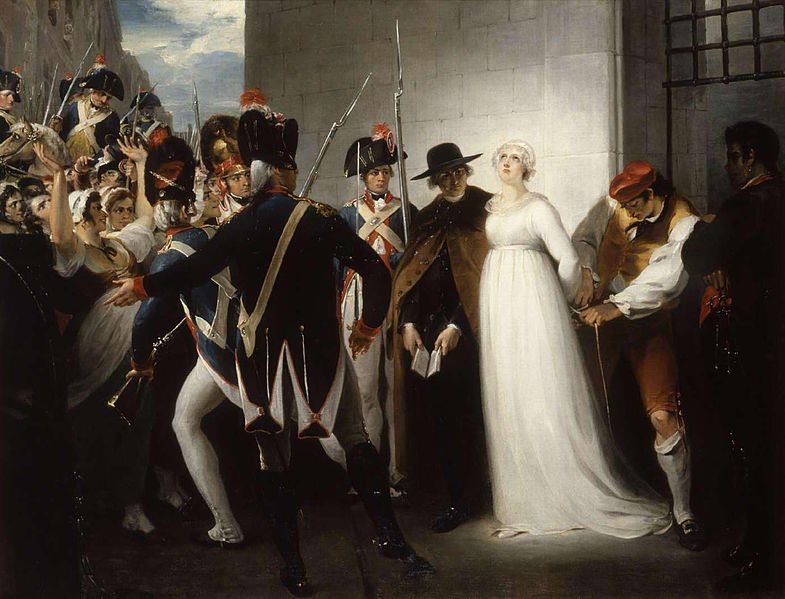
We’ve mentioned before that the much-mythologized Queen Consort of France and Navarre never said her most famous quote, “Let them eat cake,” but that’s not the only rumor surrounding Marie Antoinette. Legend has it that the night before Marie was to face the guillotine, she was so gripped by fear that her hair had turned immediately and completely white.
A condition called Marie Antoinette syndrome was named after this legend, so it really does happen. It was also said to have happened to Englishman Thomas More when he was executed in the Tower of London in 1535. However, it’s unlikely that Marie experienced noticeable follicular distress: The phenomenon only affects new growth, which means it would have taken weeks for her newly blanched hair to be visible. It is possible that the stress of her long imprisonment and dreaded execution caused her to lose hair, and she may have been denied hair dye during these months, giving the appearance of her hair turning gray.
6Queen Elizabeth II Gave A Golden Award To A Linesman

The 1966 FIFA World Cup is considered one of the most controversial moments in soccer history. The English rode a wave of momentum spurred by their amazing third goal to capture their first and only championship. The game ended with a final score of 4–2 as the crowd in Wembley Stadium roared in delight.
Naturally, there are lots of conspiracies surrounding this historical event, and one concerns a royal whistle. Some people believe that Queen Elizabeth II gave a golden whistle as an award to Tofik Bahramov, an Azerbaijani official. It just so happened that Bahramov was the one who awarded England their controversial goal. The golden whistle, in essence, was for “services rendered to England.”
Jilted fans were given some closure in 1996, when an Oxford University study finally laid the matter to rest. It concluded that, by a narrow margin of 6 centimeters (2.4 in), the ball did not cross the line. Nevertheless, Bahramov gained both fame and notoriety, even achieving immortality as the namesake of Azerbaijani’s national stadium. In 2004, the unveiling of a statue bearing his likeness was attended by several FIFA officials, including Geoff Hurst, the player who scored the infamous goal.
5Winston Churchill Was Saved Twice By Alexander Fleming
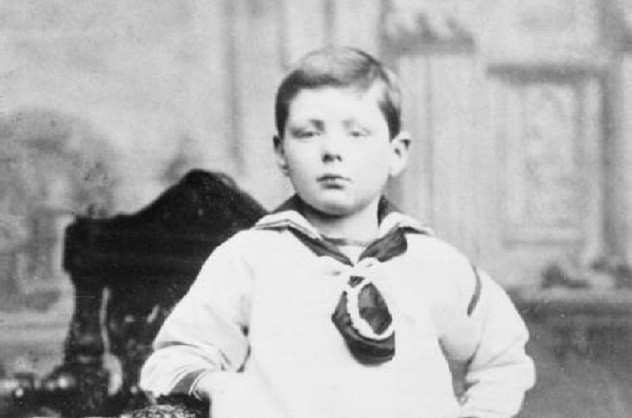
It is said that when the pugnacious Winston Churchill was but a young boy, he was swimming in a Scottish lake when he began to drown. He was saved by a passing Good Samaritan, who happened to be Alexander Fleming (although other iterations state that it was his father). Whomever it may have been, the story goes on to claim that Lord Randolph Churchill was so relieved that his son survived that he gave Fleming either a scholarship grant or a large sum of money for his education.
Of course, Fleming went on to become a genius in the scientific community, discovering penicillin. During World War II, after the young boy had grown up to be prime minister, he fell gravely ill. His life was saved by—you guessed it—a shot of penicillin.
It’s a nice story, but it likely never happened. Churchill’s biographer stated that there was never any drowning incident, nor did the patriarch of the family pay for Fleming’s education. Churchill did get sick in 1943 after the Tehran Conference, and he did get a dose of an antimicrobial, but it was sulfonamide, which is completely unrelated to penicillin. Churchill himself apparently publicly denied the entire story in 1946.
4Mussolini’s Trains And The March On Rome

You might have heard people remark that regardless of the atrocities committed by Fascist Italy, at least the trains ran on time, but it’s actually a myth. Its spread has been credited to Il Duce, whose rise to power led to a slew of propagandist claims that bolstered the Fascist movement across the country.
Italy’s railway system was not in a good state during World War I. Although repairs and improvements were made, these occurred two years before Mussolini took charge of Italian politics, and they didn’t result in remarkable dependability.
Of course, such a boast could be expected of Il Duce, whose March on Rome on October 28, 1922 had been a gloriously celebrated occasion. At least, that’s what you’ve heard. Contrary to popular belief, Mussolini was actually in Milan the entire time, still hoping for a political compromise. As the British trivia show QI put it, Il Duce must have been “cowering in his jackboots.”
3The Life And Death Of Genghis Khan
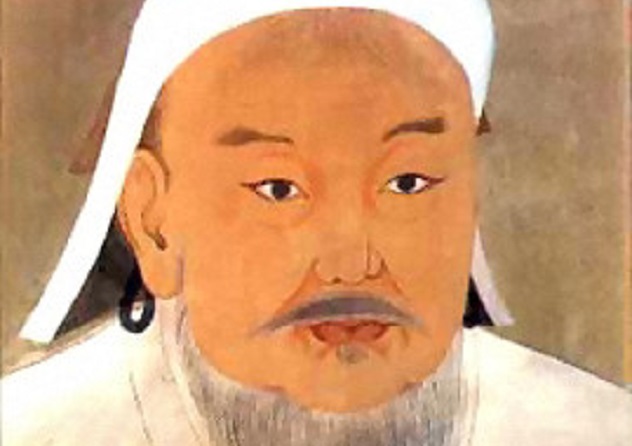
There is no denying that the Mongols were capable of horrific cruelty, but some of the Great Khan’s feats might have been greatly exaggerated. For instance, one grim account details the death of Toquchar, his favorite son-in-law, at the hands of an archer in the town of Nishapur in Persia. The Khan’s daughter begged him to exact vengeance, so he ordered every single inhabitant of Nishapur, which had a population of 1,748,000, beheaded in one hour. However, this event has been viewed with skepticism by historians and mathematicians, as the numbers alone are impossible.
While the events of his life may have been subjected to exaggeration, his death is overwhelmingly steeped in legend and mystery. Marco Polo wrote that the Great Khan was hit by an arrow, which caused the infection that led to his death on August 18, 1227. Others state that, after a weary lifetime of war, he fell off his horse one day, resulting in fatal injuries. A widely accepted view is that he merely died of natural causes. A particularly fanciful story claims that when he attempted to rape a Tangut princess (or servant, depending on who tells the tale), the would-be victim castrated him with a knife she had hidden in her sleeve, and he died from the wound. The Mongols believed for centuries that he was merely in a deathlike sleep and would awaken one day to lead his people to glory once more.
2The Lincoln-Kennedy Coincidences
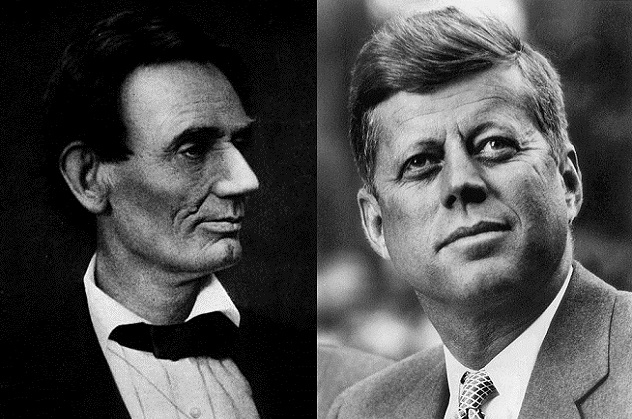
Rumors of uncanny coincidences between the lives of these two iconic American presidents have been spreading for decades. Lists of the coincidences began circulating shortly after John F. Kennedy’s assassination in 1963, finding their way into various newspapers, inboxes, and social media posts ever since.
The purported coincidences include becoming congressmen and presidents 100 years apart, having the same number of letters in their surnames, being assassinated on a Friday, being both murdered and succeeded by Southerners, and dying as a result of a fatal gunshot wound to the head. Crude humor was even added to the mix: “A month before Lincoln was assassinated, he was in Monroe, Maryland. A month before Kennedy was assassinated, he was in Marilyn Monroe.”
Ultimately, the myth that the assassinations of both men were somehow connected as if some cosmic joke was just a product of wily imaginations. Many of these “facts” are assumptions or fallacies that have nevertheless persisted, and many can be explained by much more than coincidence. For example, shooters are more likely to aim for the head when they aim to kill, their vice presidents were from the South to balance the ticket, and Marilyn Monroe had been dead for over a year before Kennedy’s assassination.
In light of these “shocking” coincidences, a publication from Harvard University released a list poking fun at how others have stretched the truth. One such entry reads: “Lincoln’s wife’s maiden name was Todd, which (ignoring one of the d’s) read backwards, is ‘dot,’ one of the symbols used in Morse Code, created by Samuel Morse, who invented the telegraph in 1844. Kennedy’s wife Jackie married Aristotle Onassis, from Greece, which had a civil war in 1944, exactly 100 years later.”
1Gavrilo Princip And The Sandwich That Changed The World

It’s widely believed that following a failed assassination attempt on Archduke Franz Ferdinand, Serbian nationalist Gavrilo Princip stopped at a restaurant to have a sandwich. In an incredible coincidence, the confused driver of the archduke’s motorcade drove it right by that restaurant, giving Princip another shot. This time, he didn’t fail, essentially spawning World War I single-handedly.
A number of books, newspapers, and trivia websites have repeated the event as a fact, but it may be a complete work of fiction. When The Smithsonian‘s Mike Dash investigated the matter, he found that the story might have originated from the 2003 BBC documentary Days that Shook the World. Dash asked Richard Bond, the writer and director of the documentary, where he learned the tale, but Bond couldn’t remember.
Dash notes that an earlier version of the tale might be found in a novel written in 2001, Twelve Fingers, which is about an assassin with two extra fingers on each hand. The protagonist meets Princip on that fateful day, when the historical figure tells him, “I’m eating a sandwich.”
Since older history books make no mention of the snack or the outrageous coincidences that led to World War I, Dash surmises that neither fate nor destiny nudged Princip. He was just at the right place at the right time.
+Adolf Hitler Was Jewish

The rumor mill has been churning out stories of Hitler’s supposed Jewish ancestry since the early 1920s. Claims that range from the Jewish origin of his surname to his descendance from a Jewish family in Bucharest to questions about his father’s legitimacy have all turned out to be false. One story even claims that one of Hitler’s own nephews blackmailed him in exchange for withholding the truth about the Fuhrer’s Jewish roots.
Regardless of these fabrications, there may be some truth to Hitler’s personal and genetic ties to the Jewish people. Not only did teenage Hitler fall in love with a Jewish girl, he might have married one. In a controversial episode of Channel 4’s Dead Famous DNA, scientists analyzed strands of hair believed to have belonged to Eva Braun, Hitler’s longtime companion and wife for a day, and found DNA strongly associated with Ashkenazi Jews. Similarly, journalists and historians managed to obtain saliva samples from 39 of Hitler’s surviving relatives, which revealed a smattering of DNA commonly found in Berbers and Jews. Critics were quick to point out that these results remain inconclusive, but they are certainly intriguing.
Jo finds it humorous that even today, such tales about Rizal have become ingrained in Filipino pop culture. Do you know of other stories such as these? Let him know via email.

